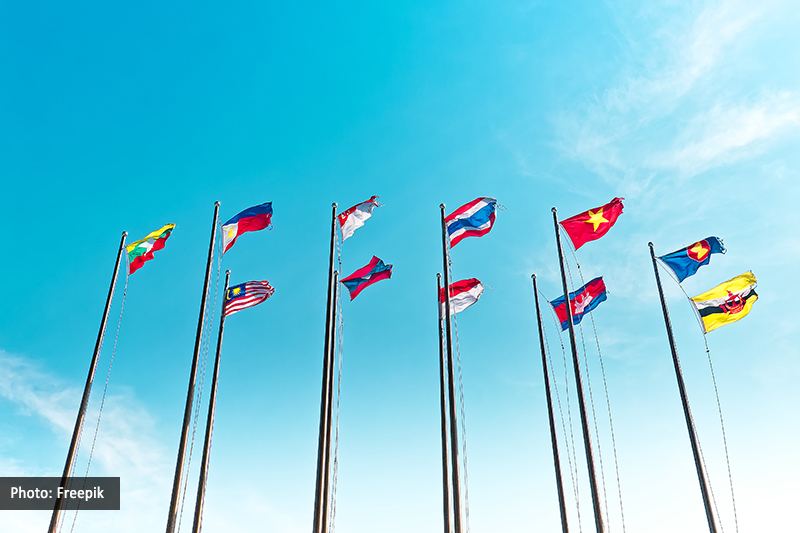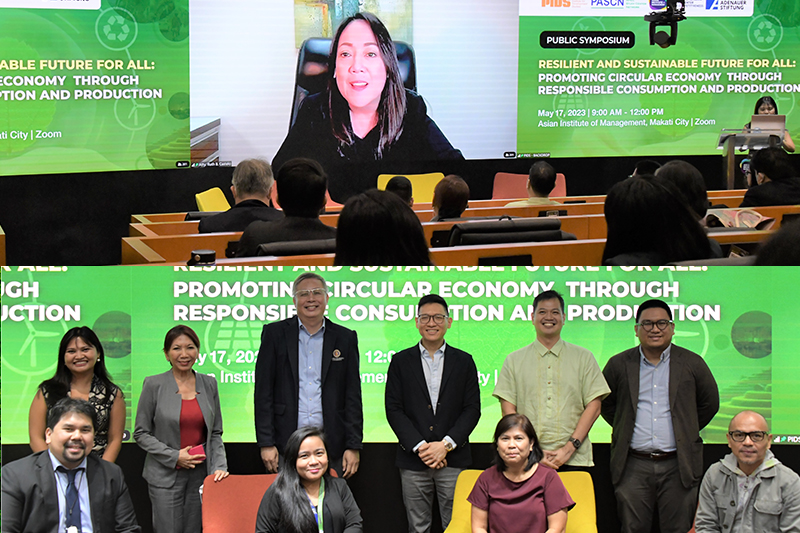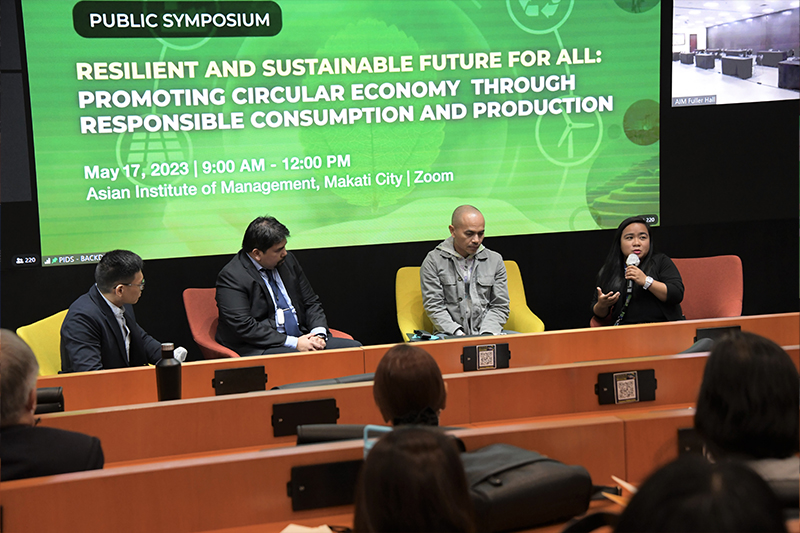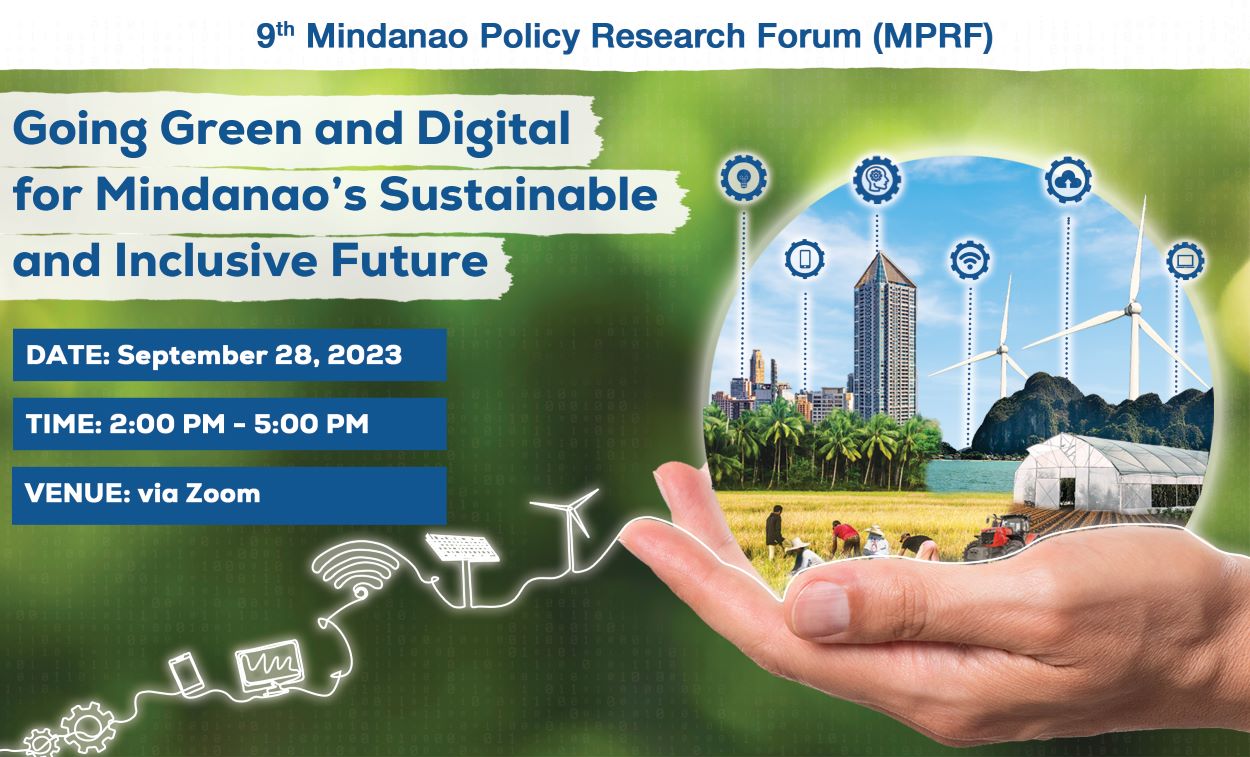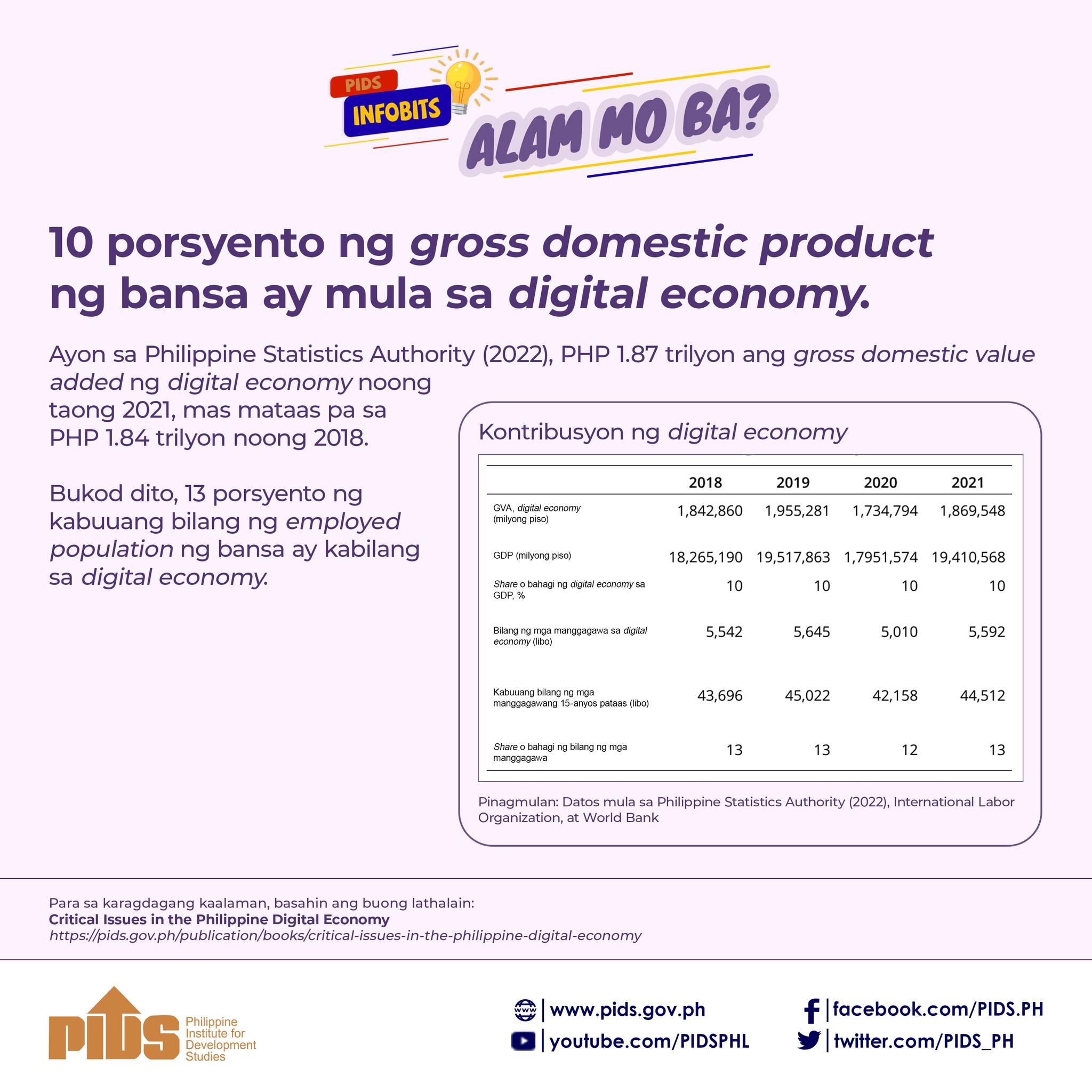ONE and zero.
These two binary digits have been, and still are, the building blocks of a new way of doing business after the nation’s leaders ordered the lockdown of territorial borders and forced people to close doors to neighbors and friends. The economy went into entropy.
But the binary digits that powered computer programs offered markets a lifeline: digital platform.
“The incredible adoption rate and changes in digital behavior of the Filipino audience are primarily what drives the big changes in the Philippine digital landscape,” Truelogic Inc. Managing Partner Bernard N. San Juan III wrote in an article for the digital marketing solutions provider. “The past five years have been a whirlwind in Philippine digital performance with the country and the region at large exceeding even the most optimistic forecasts for Southeast Asia.”
And when people speak about digital economy, there’s one word that is understood: Internet.
According to San Juan, global Internet users rose from 3.42 billion in 2016 to 4.66 billion–a 1.24 billion increase–by the close of 2020.
Global Internet penetration rose from 46 percent in 2016 to 59.5 percent last year, San Juan said.
“There were 1.97 billion social media users in 2016 and it has grown to 4.20 billion in 2020,” he wrote. “Interestingly, there was an estimated 1.3 million new users that joined social media” last year.
Grain of salt
ACCORDING to San Juan, Internet penetration in the Philippines was a “humble” 48 percent in 2016.
That number rose to 67 percent in 2019 and, at the close of 2020, sat at 74 percent.
“Pretty impressive, however, we should take this information with a grain of salt,” San Juan said. “As more affluent individuals own multiple devices and multiple connections, the World Bank estimates that the 74-percent penetration only represents 47.46 percent of the population.”
San Juan said that six years ago, we used to call people that clocked three hours and 12 minutes online in 2015 as “heavy daily users.”
“A year later, in 2016, the average Filipino would be a heavy daily user.”
San Juan said that that year, the average Filipino spent 3:12 hours online via their mobile device and 5:12 hours through a personal computer.
“Five years later, our closing stat for 2020 is a whopping 5:54 hours on mobile alone, with the heaviest users clocking in a whopping 10:56 hours per day across all devices.”
Digital marketers in the Philippines started coining the phrase “Filipinos do not go online, they live online,” San Juan noted.
“With a young median age of 25.8 years, it’s no wonder why the Philippines is one of the largest consumers of content on the Internet.”
Internet penetration
SAN Juan noted that the country’s Internet penetration hit 74 percent last year versus 2016 at 48 percent, or a growth of 26 percent.
He added that last year, smartphone users were recorded at 71.32 million, growing from the 52.2 million recorded at the close of 2016.
According to the StatCounter website, the Android operating system (OS) has a 42.11-percent OS market share in the Philippines from May 2020 to May 2021. It is followed by Windows at 41.41 percent, Apple’s iOS at 8.3 percent and OS X fourth at 4.7 percent.
In terms of the browser market share in the Philippines during the same period, Chrome takes nearly 81 percent. It is followed by Safari at 8.82 percent, Microsoft Corp.’s Edge (2.35 percent) and Firefox the fourth at 1.98 percent.
“We have come a long way in terms of Internet adoption,” San Juan wrote. “The predictions for digital media overtaking traditional media as the primary content we consume were front and center.”
He noted that it was in November 2014 when digital time overtook traditional media time with 3:45 hours of time spent on digital devices versus 3:30 hours for traditional media.
Version 7.0
A YEAR later, San Juan noted that the Philippines saw a rise in both mobile computing adoption and mobile internet penetration by 2015.
“Mobile users were growing in the country.”
San Juan said that where mobile Internet penetration began at 46.35 percent in 2016, Filipinos were at over 70 percent penetration in 2020.
“There are more smartphone devices in the Philippines than there are people,” he wrote.
“Translated to absolute terms, that is 152 million smartphones for 110 million people and over 79 million Filipino smartphone users!” San Juan said. “This was just one sign that the Filipino digital consumers were changing, and that platforms and brands had to adapt with them.”
He cited the Bank of the Philippine Islands (BPI) as “a great example of a brand who listens to the signs of the times.”
Six years ago, San Juan said the bank launched an exhaustive campaign to encourage their users to utilize the power of mobility and connectivity by transitioning their customer to a mobile banking experience through their app (V 7.0).
By November 2015, the BPI app was downloaded 1.168 million times by customers and exceeded the bank’s user target of 0.8 million. This has made the app the Philippines’s most downloaded financial app of the year.
Economic, social
THESE elements form just one part of the so-called “digital economy,” or DE.
In their paper, Francis Mark A. Quimba and Sylwyn C. Calizo Jr. defined DE as the “amalgamation of several general purpose technologies and the range of economic and social activities carried out by people over the internet and information networks.”
Quimba and Calizo, researchers of the government think-tank Philippine Institute for Development Studies (PIDS), added that with the definition, DE “encompasses the physical infrastructure on which data and information are transmitted, the devices that are used for access, the applications and software powering these devices and the functionality these applications provide.”
According to the authors, the strong and developed mobile market is “perhaps the greatest strength of the Philippine DE.”
“Households with OFWs [overseas Filipino workers] are more likely to access the internet as well, considering that long-distance relationships with families can be bridged by digital means,” the authors wrote in their 2018 paper titled “Going Digital: From Innovation to Inclusive Growth in the Philippines.”
“The Philippine DE, then, holds a strong foundation on the capacity and optimism of people and businesses to actually participate in digitalization. Filipinos could be described to be more welcoming than resisting changes in the status quo brought forth by the DE.”
Software, hardware
ANOTHER unnoticed aspect of DE is the growing reliance on automation and “robots” as health protocols point to physical distancing against the spread of Covid-19.
UiPath Inc. Managing Director for Southeast Asia Chris Loo told the BusinessMirror they are “certainly seeing companies embrace automation technologies both during and following the pandemic.”
Loo cited a survey conducted by Forrester Consulting on behalf of UiPath that found that 48 percent of respondents said their organizations are increasing their spend on robotic process automation (RPA) in the next year by 5 percent of more.
Loo explained that RPA refers to the automation, through software or hardware systems, of basic tasks usually performed by human workers.
RPA allows anyone today to configure computer software, or a “robot” to emulate and integrate the actions of a human interacting within digital systems to execute a business process, he said. RPA robots utilize the user interface, just like humans do, to capture data and manipulate applications.
“These robots interpret, trigger responses and communicate with other systems in order to perform on a vast variety of repetitive tasks,” Loo told the BusinessMirror. “Only substantially better: an RPA software robot never sleeps and makes zero mistakes.”
Laborer, robots
ACCORDING to Loo, the RPA allows organizations to automate at a fraction of the cost of other automation technologies today.
“The technology is non-intrusive—it can be placed ‘on top’ of existing legacy IT [information technology] infrastructure without causing disruption,” he said. “A by-product of this is greater efficiency and cost savings.”
Loo added: “Most importantly, though, RPA take the robot out of the human.”
“By automating repetitive, rules-based tasks, RPA allows employees to perform more value-added work,” he said. “This has the added benefit of improving workplace morale and job satisfaction.”
Loo cited Gartner’s forecast that global RPA revenue would reach $1.89 billion this year, an increase of 19.5 percent from 2020. Gartner also expects this to grow at double-digit rates through 2024.
“Asia will be a key driver of RPA growth as companies seek to become more agile and resilient following the disruptions of the pandemic,” he told the BusinessMirror.
Benefits of RPA
NONETHELESS, Loo said “there will always be jobs that require humans, especially manual work.”
“However, even in these professions, RPA will help employees.”
He cited that, for instance, one can speak to any chef and they will tell you that when they are not in the kitchen, they are in an office doing paperwork, making orders, reconciling stock and handling finances—much of it tedious, repetitive and rules-based.
“RPA is able to automate much of this work, automatically processing invoices from suppliers or checking stock inventory, allowing the chef to spend more time in the kitchen.”
Loo emphasized the importance of understanding that automation technologies such as RPA “are not about simply cutting costs and improving efficiency—although these are important benefits.”
“RPA is about taking the robot out of the human and freeing employees to do value-added work that uses creativity, innovation, etc.”
Embracing automation
ACCORDING to Loo, they have seen how the Covid-19 pandemic drives the use of automation solutions “in a number of ways and for a number of reasons.”
Firstly, during the height of the pandemic itself companies needed to adopt RPA as a reaction to the immediate situation, out of a need for survival, he explained.
He cited as example the call centers that increased RPA and Artificial Intelligence (AI) use to help employees deal with increased call volume.
“This was especially useful for airlines and travel companies who had surges in cancellations and enquiries.”
As time has progressed, Loo said they have seen organizations embracing RPA to build resilience.
“Many firms saw the risk that the pandemic brought especially with employees suddenly required to work from home; so firms are investing in automation to mitigate against that risk,” Loo told the BusinessMirror. “Businesses are looking to automate more repetitive, rules-based tasks which currently require human intervention, thus freeing up their employees to be able to add value in other ways, often enabling them to work from home.”
He cite a good example of this in the processing of invoices, with employees traditionally processing invoices manually and inputting relevant details into their systems.
“With RPA ‘Document Understanding,’ this can all be automated, giving employees the freedom to go on and do more value-added tasks.”
Lastly, organizations are looking beyond the pandemic and are seeing how behaviors have changed both within and outside of the workforce, according to Loo.
“Customers are doing more online and businesses need to respond to that and become more efficient and capable,” Loo said. “RPA and AI are fundamental to firms’ digital transformation plans and their plans for recovery.”
Not from top
AND if RPA is a juggernaut of a word for some, Loo offers the solution offered by “low code” automation, a process of coding that is simple and accomplished by non-technical businessmen.
He told the BusinessMirror that “’Low Code’ automation will allow citizen developers and employees with limited coding experience to build their own automation solutions.”
“This could not only transform the way organizations automate and digitally transform, but it could change the way automation is perceived by employees themselves,” Loo said.
UiPath have recently launched UiPath Apps, a web-based, drag and drop business application studio that enables citizen developers to build and deploy enterprise grade applications that deliver automation solutions. This allows the users themselves to start conceptualizing, designing and building solutions that will automate tasks that they have to perform in their working lives.
By making this solution user-friendly and easy to use—with a drag-and-drop functionality—automation is now accessible by the employee who can build automation himself or herself. Previously, automation would be a “top down” initiative with senior management leading the charge and often deciding what should and shouldn’t be automated.
“Now, I foresee employees taking the lead and driving change from the bottom up.”
Efficiency driver
LOO believes that in the near future, automation technologies such as RPA will be a significant growth driver for the Philippine economy.
“If handled well, automation will help continue and even accelerate its economic growth.”
He emphasized this is because RPA has relevance across almost any industry, from finance and manufacturing to contact centers and aviation and can be tailored to different processes and functions.
RPA can help banks process and approve loan applications faster, reducing the cost of loans and making credit more accessible to more small and medium-scale enterprises and entrepreneurs, he said.
Loo added that RPA, working alongside AI, can help make call centers more efficient and effective, “further expanding the Philippines’s market leadership position in this sector.”
“We have seen consumers go online over the past year and RPA can help retailers process orders and enable chatbots to process customer requests and questions,” he told the BusinessMirror. “As low code, app-based solutions become more widely used, the power will be placed in the hands of the Filipino employee who will be able to leverage automation to improve his/her job prospects.”
“Automation ultimately creates even more jobs and organizations that embrace this technology will become more competitive and be able to expand quicker.”
Filipino consumers
ANOTHER component of DE is electronic commerce (e-Commerce).
According to San Juan, the country’s e-Commerce stood at $1 billion in 2016, with a growth forecast of 16 percent year-on-year. In 2017, the actual figure was at $1.23 billion, growing over 22 percent and beating projections. Following the trend, it was forecasted to grow further to $2.055 billion.
“By 2020, we crossed over to $4 billion, again beating expectations by 100 percent in e-Commerce alone,” San Juan wrote. “And when you take all online transactions into account, the Philippine digital economy actually grew to $7.5 billion in gross merchandise value (GMV).”
San Juan broke down the GMV into the $4 billion in e-Commerce GMV—a 55-percent increase from the previous year and a 400-percent increase against 2016—and the $800 million in food and transportation.
“Food accounted for a huge portion of this given the contraction in transportation transactions from the ride-sharing economy.”
The e-Commerce GMV is also composed of $700 million in travel and hospitality, a 66-percent decline from $2 billion the previous year, and the $2.1 billion in online media, which is a 27-percent increase from the previous year.
“Taking the country’s adoption to online content, it’s not surprising how quickly Filipinos adapted to online transactions,” San Juan said.
Increasing online
ACCORDING to San Juan, the year 2020 saw 37 percent of Internet users in the country transition to e-commerce for the first time, with 41 percent of this first-time e-commerce users coming from Metro Manila and 59 percent from outside the National Capital Region.
And the Filipino digital behavior is not expected to change post-pandemic. In its recently released “e-Conomy SEA 2020” report, Google, Temasek and Bain & Co. estimates that the adopted behavior will persist among 95 percent of all new adopters post Covid-19.
The same is true of the whole Southeast Asia region, San Juan said.
He noted that in 2018, e-Commerce volume in Southeast Asia was forecasted to sit at $22 billion for 2020.
“In 2020, it closed at a glowing $62 billion, almost triple the forecast from 2018 and a 63-percent increase versus the previous year.”
San Juan noted that the 2019 Southeast Asia e-Commerce volume closed at $38 billion, “a figure the region was not expected to cross until 2022.”
However, Nielsen IQ has warned of the “end of the beginning of e-commerce in Asia.”
“Online sales for FMCG [fast-moving consumer goods] did not stem from increased spending by existing online buyers but from the rising numbers of households buying online and from increased frequency in buying and spend,” NielsenIQ, a global measurement company, said in March.
Technological advancements
VAUGHAN Ryan, Nielsen IQ’s Consumer Intelligence managing director in Asia, was quoted in a statement as saying: “We have entered the end of the beginning of e-commerce in Asia and those who rest now will sleep through the most formative time of growth for e-commerce.”
“The technological advancements and creativity of the last decade have made the retail world more advanced—leading to an environment where trust is solidified, where it is more than logistics but more about pushing the envelope on personalized discovery and curation, where there is exploration of new categories, and seamless omnichannel integration,” Ryan added.
According to NielsenIQ, while e-commerce has been viewed to transform retail, Covid-19 accelerated its trajectory to its readiness to transition to the next phase.
It noted that the growth in the Philippines is the most dramatic due to stricter movement controls in 2020, recording more than a 325-percent increase in households shopping online.
Nielsen IQ further noted that 67 percent of consumers who have purchased online plan to continue to buy online even after quarantine restrictions are removed.
“This signals a more permanent transition towards a brick-and-click shopping behavior where both formats influence the final purchase decision,” Pauline Jill Uy-Yu, Nielsen IQ’s Consumer Intelligence head in the Philippines, said. “As consumer habits continue to evolve, it’s important for retailers to track performance versus competition or risk becoming obsolete to the omni-shopper.”
Seeing changes
SAN Juan agrees, saying consumer behavior is changing.
“Our most recent marketing campaigns have forced us to abandon what we knew about our audiences,” he said citing their approach to e-mail marketing as example.
San Juan explained that “historically, we send e-mails avoiding peak deletion hours of 7 a.m. to 9 a.m., 4 p.m. to 6 p.m., and weekends; and expected the highest open rates between 10 a.m. and 4 p.m.”
“Today, however, we find our peak responsiveness before 7 in the morning and after 5 in the afternoon.”
Another example he cited are brands that executed social media content targeting mothers.
These brands, according to San Juan, “used to communicate with them [moms] during travel time to and from work; that is, when people are stuck in traffic and have attention to spare. Then right before the end of their day, usually between the hours of 9 and 11 at night.”
“But since lockdown, people are no longer travelling to and from work,” San Juan wrote. “With everyone online and your optimum window now out the proverbial window, it’s deemed necessary to re-acquaint yourself with your ‘always on’ audience.”
He added that “whatever you thought you knew about your target audience’s behavior—‘un-know’ them.”
“Chances are, your audience has changed; so don’t be left behind.”
PHL building digital economy blocks one step at a time




